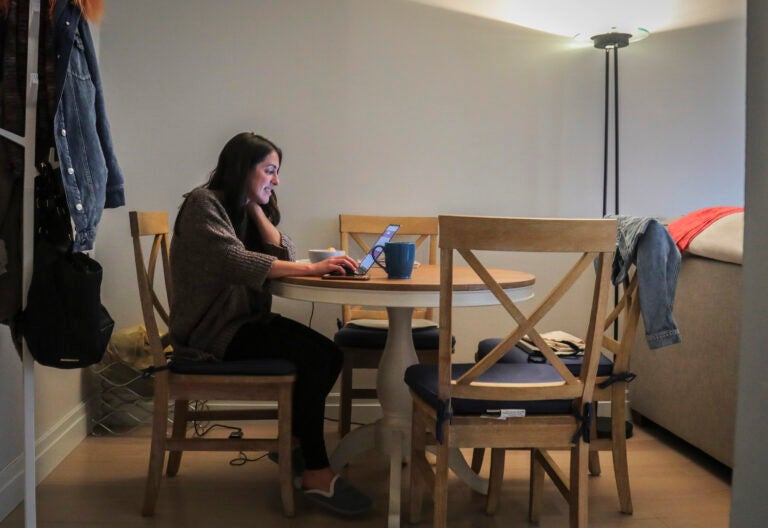A remote work revolution
The pandemic forced millions of American workers to do their jobs from home. How is this remote work experiment going a year later? And is working from anywhere the future?
Listen 49:01
In this March 11, 2020, photo, Lindsay Garfield works from home in New York. Garfield said she gets more done without the constant office interruptions. (AP Photo/Bebeto Matthews)
More than 40% of the American workers are doing their jobs remotely. For almost a year, many people have made their kitchens, bedrooms, basements or backyards into offices, juggling demands of work with home (sometimes home schooling), bad WiFi, too many Zoom meetings, and no more water cooler talk with colleagues. In the first part of our series exploring how COVID has changed the way we work, we look at the forced remote work experiment and discuss how it’s working out. We’ll discuss the pros and cons, look at its effect on where and how we live, and examine what it reveals about economic, racial and gender equity. Our guests are DEREK THOMPSON, staff writer at the Atlantic, and BARBARA LARSON, professor of management at Northeastern University.

Subscribe for more Radio Times
WHYY is your source for fact-based, in-depth journalism and information. As a nonprofit organization, we rely on financial support from readers like you. Please give today.





